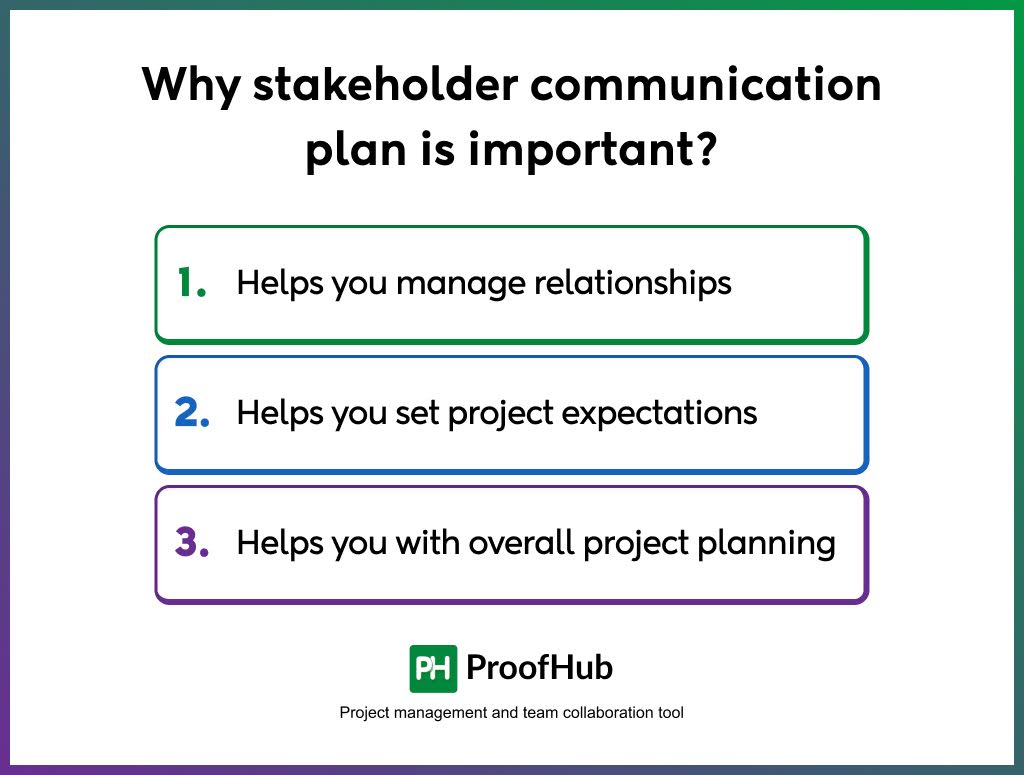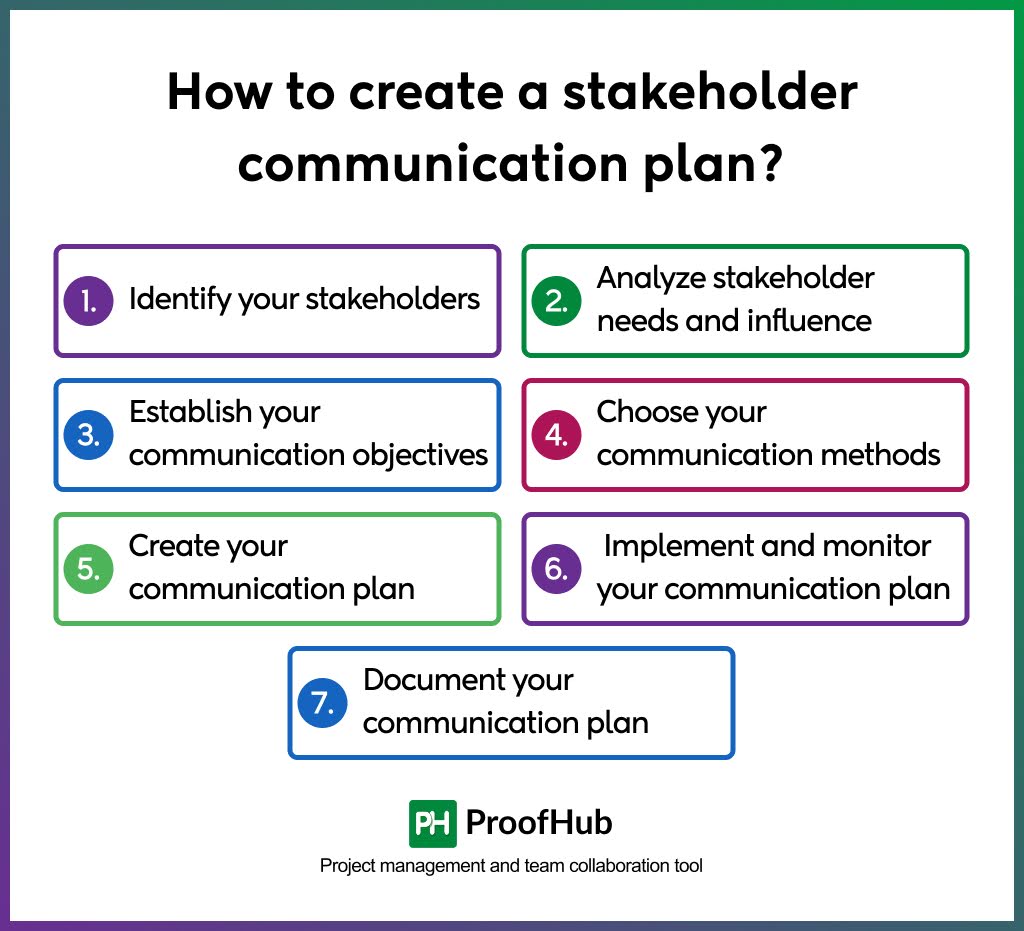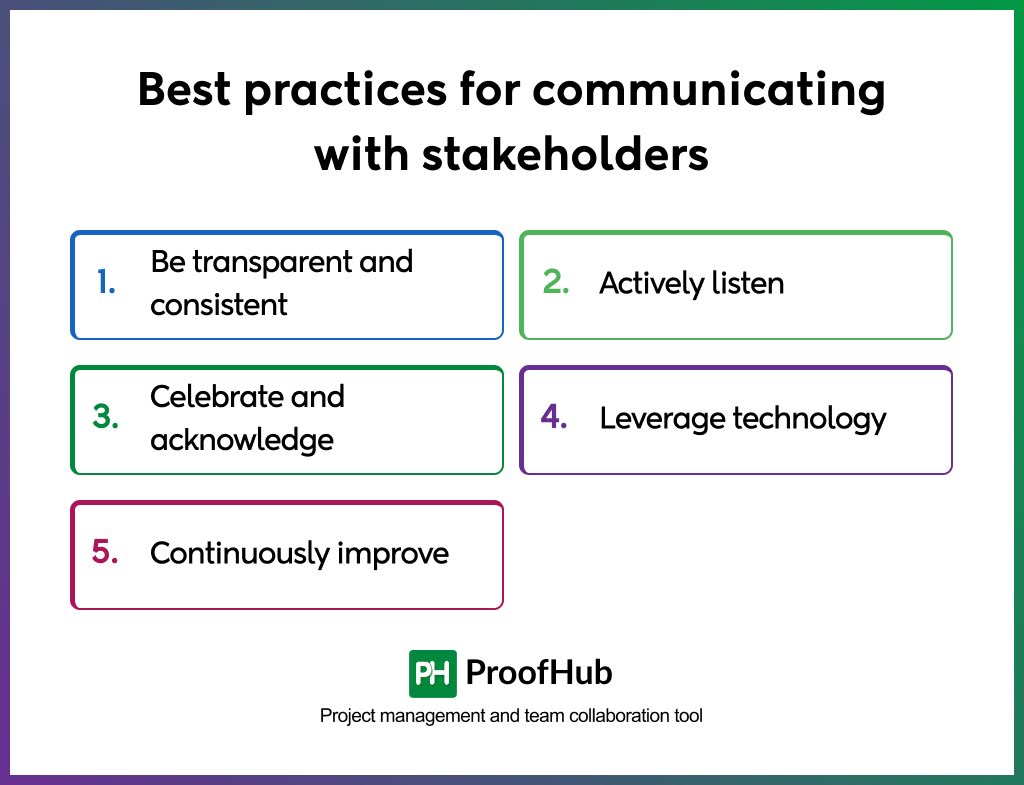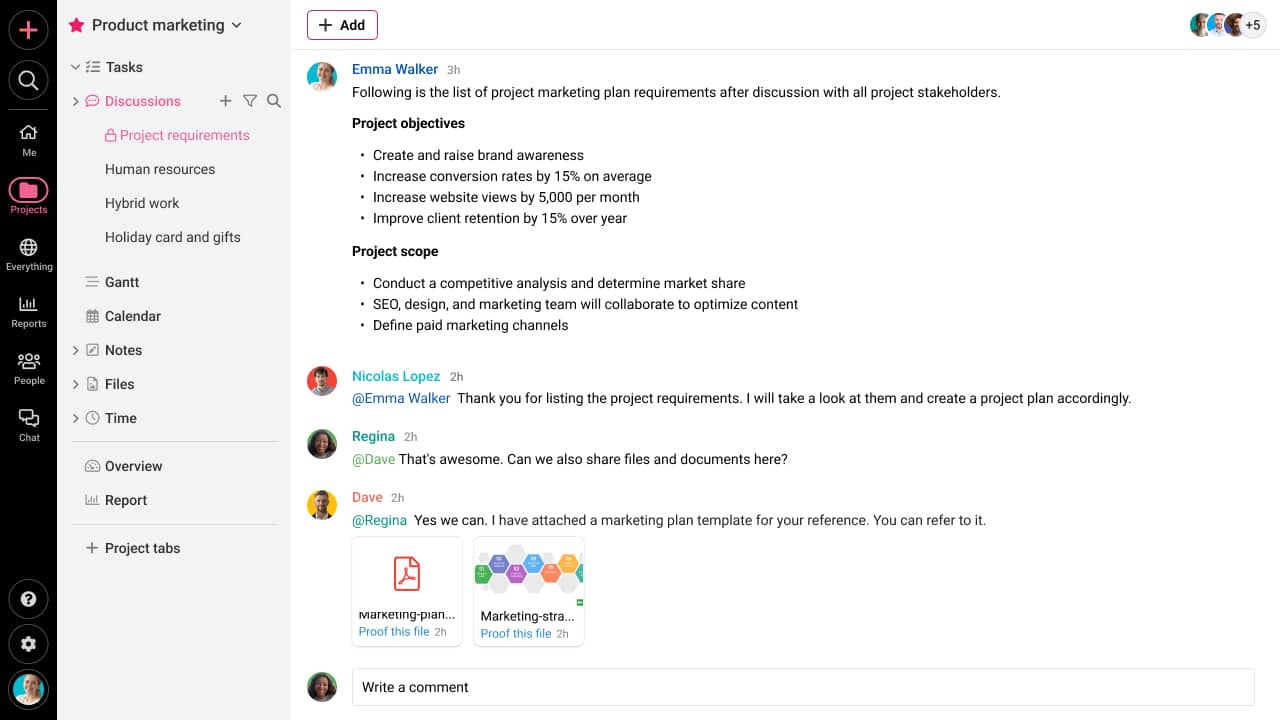Ever felt like you’re talking in circles with your stakeholders, repeating updates, clarifying misunderstandings, or dealing with misaligned expectations?
You’re not alone. Communication breakdowns are one of the leading causes of project failure. In fact, according to a study by the Project Management Institute (PMI), poor communication is responsible for one-third of all project failures and negatively affects more project success more than half the time.
A clear and concise stakeholder communication plan can help you avoid these issues. It serves as a strategic framework to ensure that the right people receive the right information at the right time through the right channels. From identifying who your stakeholders are to choosing the appropriate communication method, a well-structured plan fosters transparency, alignment, and engagement throughout the project lifecycle.
In this article, we’ll cover what a stakeholder communication plan is, why it matters, the key steps to create one, real-world examples, and best practices for communicating effectively.
What is a stakeholder communication plan?
A stakeholder communication plan is a document that outlines the communication strategy for engaging with various stakeholders involved in a project.
The plan makes sure that the right audience gets the right message at the right time through the right channels.
It commonly includes:
- Information about the stakeholders
- Their communication preferences
- Key messages
- Communication channels
- How often should communication take place
- The person responsible for delivering the message
The goal of this plan is to establish a clear and effective communication process that promotes transparency. Also, it builds trust and fosters positive relationships with stakeholders.
Why stakeholder communication plan is important?
Stakeholder communication plans help in the successful execution of projects and the overall management of organizations. Here are several reasons why these plans are essential:

1. Helps you manage relationships
Effective communication with stakeholders in project management is important for managing relationships with clients, investors, employees, and other key stakeholders.
You can build trust and stronger partnerships by keeping them informed about project goals, progress, and any changes.
Regular communication shows that you value their input, increasing their overall satisfaction with your organization.
2. Helps you set project expectations
A well-structured communication plan lets you set and manage expectations from the beginning.
By clearly outlining project phases, timelines, quality standards, and other essential details, stakeholders have a clear understanding of what to expect throughout the project lifecycle.
This increases transparency and decreases misunderstandings, reducing the risk of conflicts and project delays.
3. Helps you with overall project planning
A comprehensive communication plan enables effective project planning by providing guidelines on sharing critical information among stakeholders.
By specifying communication channels, frequency of updates, and key deliverables, the plan ensures that stakeholders remain informed about project milestones, deadlines, budgets, and other relevant aspects.
This proactive approach to communication enhances coordination and collaboration among project participants, leading to smoother project execution and better outcomes.
How to create a stakeholder communication plan?
There are seven common steps for creating a communication plan for stakeholders. These steps make sure everyone involved in a project stays informed and engaged. Here’s how you can do it:

1. Identify your stakeholders
First off, you need to analyze your stakeholders. It means you need to figure out who exactly they are. These are the individuals who have a stake in your project or could be affected by it. You can split them into two groups:
- Internal stakeholders: Are the people within your organization who are directly involved in the project. They can be your project manager, team members, and anyone else working on it.
- External stakeholders: Are outside the company but still have an interest in what you’re doing. They can be clients, suppliers, regulators, or even competitors.
Imagine you’re working on a marketing campaign for a new product. Then, your internal stakeholders will be your marketing team and upper management. On the other hand, external stakeholders will be customers, investors, and even industry influencers.
2. Analyze stakeholder needs and influence
Once identified, assess the communication needs, expectations, and influence of each stakeholder. Understand:
- Their level of interest and influence on the project
- What type of information do they need?
- How frequently should they be updated?
This will help you tailor your communication approach based on their importance and involvement.
3. Establish your communication objectives
In this step, you will define what you want to achieve with your communication. To do so, you can consider what your organization’s goals are and how your communication plan can help meet them.
The more precise your objectives, the easier it’ll be to communicate them effectively. Unclear objectives are one of the most common project management mistakes that lead to project failure.
If your company is launching a new product, your objectives include increasing sales, raising brand awareness, or gathering feedback from customers.
4. Choose your communication methods
Now that you know who you’re talking to and what you want to say, it’s time to decide how you’ll deliver your message.
Different stakeholders prefer different methods of communication. For example, you use email for formal updates to clients but a group chat for quick check-ins with your team.
You can use social media, email newsletters, or even in-person events like product demos to reach out to customers about your new product.
5. Create your communication plan
In this step, you need to gather all the information you’ve collected so far and put it into a structured plan. Your communication plan should provide a clear outline of when, how, and how much you will communicate with your stakeholders.
For each type of communication, decide:
- Who you’re talking to
- How will you reach them
- What will you say
- Any other relevant details
Also, divide your communications by frequency, like daily, weekly, monthly, etc. This means you specify how often you will communicate with each stakeholder. You can do this based on their level of involvement and interest in the project.
- If a stakeholder is heavily involved in the project and has a high level of interest, you need to communicate with them more frequently.
- On the other hand, if a stakeholder has a lower level of involvement and interest, you can communicate with them less often.
With this strategic approach, you will have complete control over how and when you want to update your stakeholders. So that they have access to only relevant information.
6. Implement and monitor your communication plan
Once you have created a plan, it’s time to put it into action and make sure that everything is running smoothly.
You should keep an eye on how stakeholders are responding to your communications. If something isn’t working, don’t hesitate to make changes to your plan.
Lastly, make sure someone is responsible for managing and updating the communication plan as needed.
This person will keep an eye on changes in the project or organization and adjust the plan accordingly.
A project manager or a dedicated communications specialist can take on this role. Their job is to make sure that everyone stays informed and on track.
7. Document your communication plan
Once all details are finalized, document your stakeholder communication plan in a structured format, such as a spreadsheet, table, or integrated into your project management software.
The best way to do this is to put all your project information in one place, such as project planning software. Stakeholders can use this tool to see how the project is progressing. They can also check the overall timeline effortlessly.
Example of stakeholder communication plan
Let’s take an example of a restaurant chain that wants to introduce a new menu. They create a stakeholder communication plan to keep everyone involved informed about the new menu launch.
The first step is to identify the main stakeholders:
- The customers
- The chefs
- The restaurant franchise owners
Then, the restaurant sets its communication objectives. The main objectives are:
- Inform customers about the new menu via social media pages.
- Provide chefs with feedback from customers about the new menu via email.
- Keep the franchise owners informed about the expected profitability of the new menu via monthly meetings.
A rough stakeholder communication plan for the restaurant chain would look as follows:
- Weekly: Provide chefs with feedback from customers about the new menu via email.
- Monthly: Hold meetings with franchise owners to discuss the expected profitability of the new menu.
- Quarterly: Launch new menu items and inform customers about the new menu via social media pages.
This simple plan ensures that each stakeholder receives the right information at the right time through the most appropriate channel. It also helps the restaurant maintain strong relationships and stay aligned across all levels of the business.
Best practices for communicating with stakeholders

- Be transparent and consistent: Provide regular updates and maintain consistency in your communication style. This will build trust and avoid any confusion.
- Actively listen: Be attentive when listening to stakeholders’ feedback and concerns. Then, address them promptly and transparently. This shows that their input is valued and encourages open dialogue.
- Leverage technology: Make use of digital tools to facilitate information sharing and streamline communication workflows.
- Continuously improve: Regularly review and gather feedback to identify areas for improvement. Continuously refine your communication strategy to make sure that it meets the needs of stakeholders.
- Tailor communication to different stakeholders: Different stakeholders have different needs. Customize your message, level of detail, and communication channel depending on their role, interest, and influence.
How ProofHub streamlines your stakeholder communication plan
ProofHub streamlines your stakeholder communication plan by acting as a centralized platform for all project-related updates, discussions, files, and tasks in one place.
- Centralized platform: ProofHub acts as a central hub for all your project communication. This eliminates the need to send multiple emails and make phone calls. All stakeholders can access relevant information, updates, and discussions in one place. This will make sure that everyone is on the same page, avoiding any confusion.

- Streamlined task management: With ProofHub’s task management features, you can assign tasks to stakeholders, set deadlines, and keep track of their progress in real-time. This provides you with a clear view of the project workflows. It also ensures that all the tasks are completed on time.
- File sharing and version control: ProofHub provides a secure platform to share project files with stakeholders. You can upload files, share updates, and track changes using the version control feature. This ensures everyone has the most up-to-date and accurate information.
- Improved transparency and accountability: ProofHub allows all stakeholders to communicate with each other, keep track of their tasks, and access important files – all in one place. Everyone involved in the project can stay in the loop and be accountable for their responsibilities. This builds trust and encourages collaboration between team members.
Overall, ProofHub becomes your central command center for stakeholder communication, streamlining the process, fostering transparency, and ensuring everyone involved stays informed and engaged in achieving the project’s goals.
Frequently asked questions
How to measure the success of my stakeholder communication plan?
To measure the success of your stakeholder communication plan, you need to track how well you are communicating with your stakeholders. You should pay attention to how well your messages are received and how engaged your stakeholders are. Plus, you should make sure you are meeting your communication goals.
What role does leadership play in stakeholder communication?
Leaders are responsible for setting the tone and direction for stakeholder communication. They create a culture of open communication and transparency. Leaders should be visible and accessible to stakeholders. They should regularly communicate with them about important issues.
How can I ensure effective communication with diverse stakeholder groups?
To ensure effective communication with diverse stakeholder groups, create and implement effective communication strategies. Your messages should be clear, relevant, timely, and easy for everyone to understand. It’s also important to listen to feedback from stakeholders and use it to improve your communication plan.

